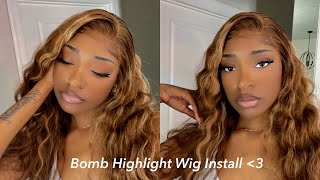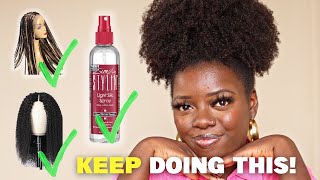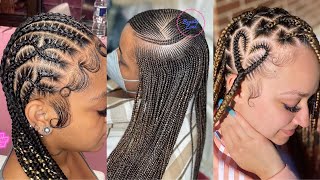All Black Everything: Beyonce’s New Music Video “Formation" Glorifies
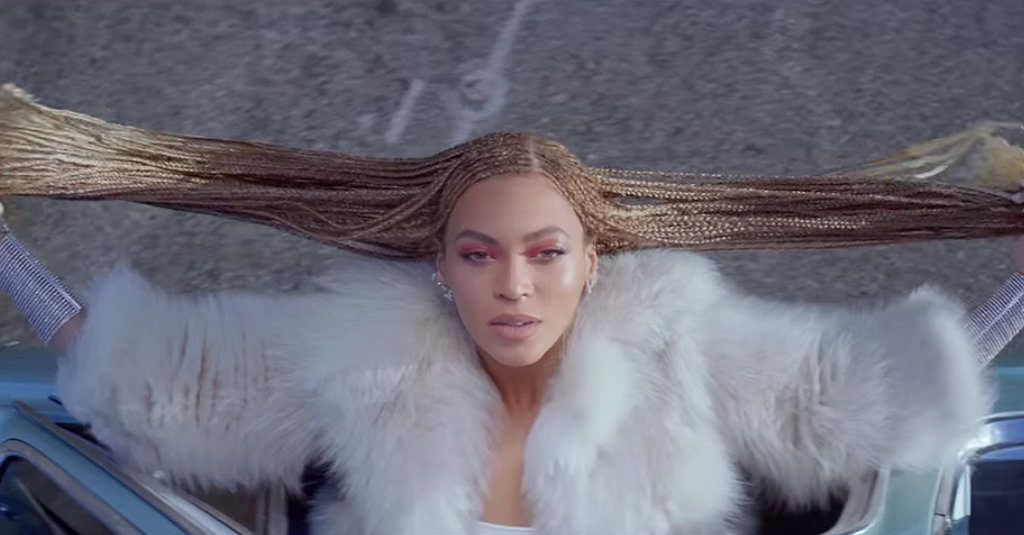
Beyonce just dropped a new single the day before her Super Bowl performance, and the music video for the hit entitled “Formation” does not disappoint. Bey is back on her throne and proclaiming a message of unapologetic blackness that has the Beyhive and the internet fired up.
Set against a backdrop of a flooded New Orleans that conjures up memories of Hurricane Katrina, the video features an all-black cast, all natural-haired dancers, a spray-painted wall reading, “Stop shooting us”, and an intro by Messy Mya and Freedia, who expound on their love of cornbread and collard greens. It goes without saying that the styling and storytelling of the video are complex and powerfully symbolic.
The backdrop of the video itself is significant. By using New Orleans as the setting, she tells a story of rising from disdain to a position of prominence. It is not just the story of New Orleans. It is her story. It is also ours—the story of every black man and woman.
We have come so far as a community. Who knew that our culture would ever become mainstream; that it would eventually inspire mimesis, the highest form of flattery? Remember when only people who were actually from the hood spoke like they were from the hood? Remember when it took a boycott of the Grammy’s by Will Smith and other black artists for Rap to become a recognized music category?
Who knew that Givenchy and Jean Paul Gautier would send baby hairs down the runway as the newest haute couture trend for Fashion Week? Or that Prada, a notoriously whitewashed label would choose black women as the faces of their campaigns two years in a row (Lineisy Montero 2015, Yasmin Wijnaldum 2016)?
We have risen, and we are thriving. We have been defiantly unique, until the world accepted us exactly as we are; until our critics sought to imitate us due to the admiration of this obstinate individuality. This is Beyonce’s proclamation as she sits atop the NOLA police car, surrounded by the dilapidated homes of a city that no one thought would recover from the hurricane that swept it.
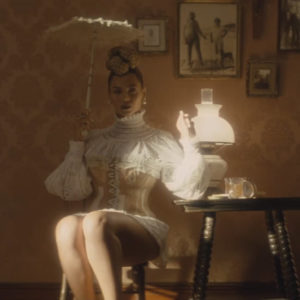
The scenes within the video drive this point home further as Queen B effectively idealizes the things that are often poked fun of and stereotyped in black culture. One glorious scene focuses on three black women in candy-colored weaves* and huge hoop earrings in a beauty shop surrounded by rows of wigs*, featuring a close-up of one girl holding a weave* and petting it. The video embraces what others deem as our flaws, glamorizing and empowering black women through these unabashed depictions.
One scene portrays images of her in a Victorian dress featuring a high-collar representative of European nobility, another has her surrounded by black Southern belles all in Edwardian era dresses, fanning themselves in the parlor of a home.
The Victorian and Edwardian era were time periods in which black women were generally missing from such depictions of grandeur and refinement; due obviously to the fact that during these eras, in America, we were slaves, our value depreciated—an affect that we are still working at undoing.
By placing black women in the luxurious vestments of these time periods, she seeks to unbind us from our association with savagery and slavery.
These perceptions became the psycophysical shackles that were never removed although we were physically freed. Instead, Beyonce claims a right to black portrayals of sophistication and affluence with the intent to rewrite how black women should be viewed now and into the future.
These visions of societal refinement and gentry are juxtaposed against unfiltered portrayals of her in a thick natural-haired blowout and even sporting waist-length braids circa her Destiny’s Child days.
The combination is a brilliantly subliminal tactic in influence; by associating these two versions of black women as the same through visually equating them, the video presents a portrayal of black women as uniquely refined.
This out-of-the-box version of class includes black women and culture as it is, a much needed representation in an era where black women are just beginning to see themselves portrayed as equally posh creatures in media.
These scenes, however, are just psychological foreplay that lead to a shot of the video that speaks multidimensional volumes: In it B is showcased in a floor length black Givenchy gown, dripping with necklaces that evoke the stacked traditional neck collars of Kenyan tribes at the same time that it is reminiscent of blinged out rappers and echoes the high-neck collars of European aristocracy.
The result is a visual “triple entendre” that Jay-Z would be proud of, showcasing a full-circle of progression from our native roots, to earning top tier status among the financial elite. Long live the Queen!
The lyrics of the song do not fall short either, as she proclaims herself as a Texas “bamma” who likes her “negro nose with Jackson Five nostrils”. This statement is as powerful as it is a self-affirming rebuttal to all those throughout the years who have accused her of whitewashing herself in order to garner fame.
The lyrics also state that she likes her baby’s hair with baby hair and an afro, followed by scenes of a natural-haired Blue Ivy dancing proudly with two other black girls, each with natural, curly crowns.
A timely and welcome edification of all things black, the video is made all the more significant due to the fact that it comes from an artist whose audience supersedes racial lines. This makes her message more influential, allowing it to resonate with black and white listeners alike.
The importance of this video cannot be understated, and for those who attribute her success to a pact with the Illuminati, she mockingly makes it very clear what it takes to be successful, “Slay trick, or you get eliminated”. There are no ifs or buts about it, Beyonce has worked hard to get to where she is, and she is now at a point in her career where no one can touch her.
She has reached the status of a generational icon, and in this position she can glorify herself and all that she is. She, by way of position, effectively becomes a prism through which society can view all aspects of black culture as distinctive and worthy of repute, rather than derision.
This especially applies to black women, as throughout the music video she showcases that we, in all of our our forms—relaxed, natural, braided, or even wearing weaves*—are exquisite forces to be reckoned with.

